|
Ref : 0888
A good German cello labelled
|

go to Home Page see more Cellos |
As with other German violinmaking dynasties such as the Klotz, Pfretzschner and Schuster families, the Neuner family mostly operated large studios where various members of the family and other craftsmen and apprentices contributed to the making of the instruments, which then eventually would be labelled with a label of the main studio owner or maker in charge of the business. Such labels were used somewhat casually, often identifying the workshop rather than the actual maker. This makes it difficult - if not impossible - to identify in an instrument the hand of a specific maker, although of course it is perfectly possible that an instrument may have been made by the individual named in the label. It is too simplistic to assume that an instrument is authored as stated in the label, which betrays ignorance of how those workshops operated. Any attribution or certification of such instruments is contingent on the examination by a top authority, of which in South Africa, there are none.The label in this cello (dated 1802) is associated with Mathias NeŁner (1762-1830), or more accurately, with his studio. (The 'Nro. 94.' usually found on his labels refers to street number of his address and is NOT a serial number, as is often thought.) He is known to have employed a number of apprentices throughout his life and whether or not this cello is made by him, is at this stage unknowable. But it can be safely assumed that it comes from that workshop. The apparent age of the instrument would be consistent with dating from around 1800.
This cello is blatantly based on the Stradivari model - an attractive instrument with elegant lines. All the materials in it are good, although the back, sides and scroll are of less-figured wood, the feeling with this cello is that the emphasis was on making a sonorous and responsive instrument, rather one of shallow prettiness. The varnish is in keeping with what is stated in various publications about this maker's work - his original formula was of a golden-brown oil varnish which over the years oxidized into a beautiful reddish-brown or amber shade - exactly what we see in the cello.
This instrument has had many repairs. Instead of discussing each individually, suffice it to say that this cello was subject of a large-scale in-depth restoration over the past two years. I went to a lot of trouble to verify each repair and can assert that the work was done thoroughly and correctly and that the cello is structurally perfectly secure. Especially noteworthy is that the crack in the rib around the lower bout (treble side) has been reinforced for its entire length with a strip of wood on the inside, heat-bent to cover the crack perfectly. Also, the shim (wedge) under the fingerboard appears to have been the best option rather than removing and resetting the neck, which would have engendered other problems. This wedge serves as more than simply raising the elevation, but rather makes for a restructuring and reinforcement of the neck itself - quite ingenious. Lastly, the brand new fingerboard is perfectly graded - all round good work.
This cello is very well-toned with clarity and projection and a pleasure to play on.
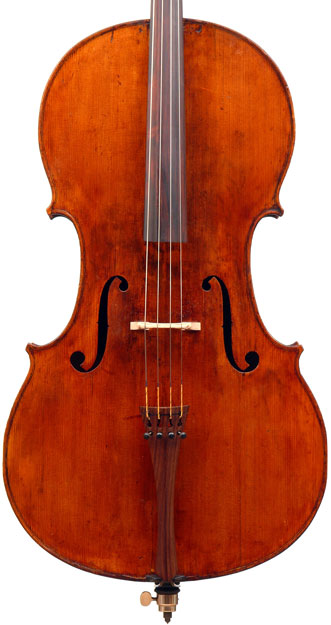 |
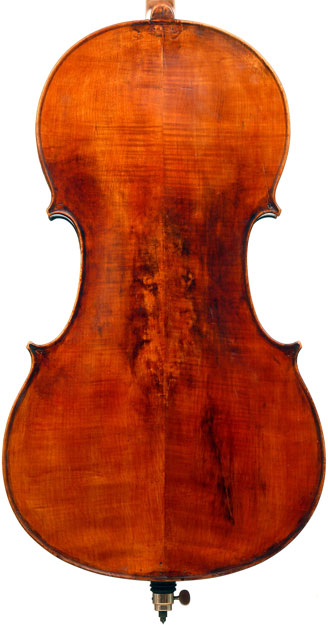 |
 |
||
 |
Dimensions : Standard full-size Stradivari model
Condition : This cello was the subject of a big restoration during 2014. All repairs have been correctly and professionally carried out and the instrument is structurally secure. See more specific comments in the text above.
Provenance : Withheld
Price : P.O.A.
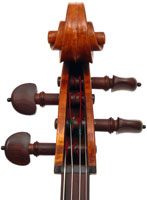 |
 |
 |
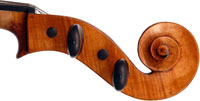 |
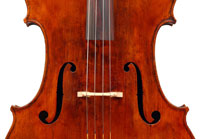 |
 |
 |
 |
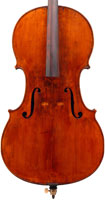 |
 |
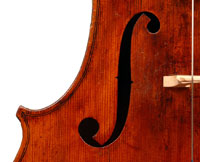 |
 |
|||||
 |
 |
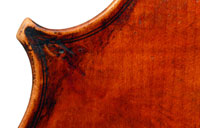 |
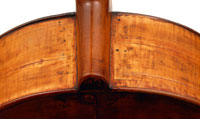 |